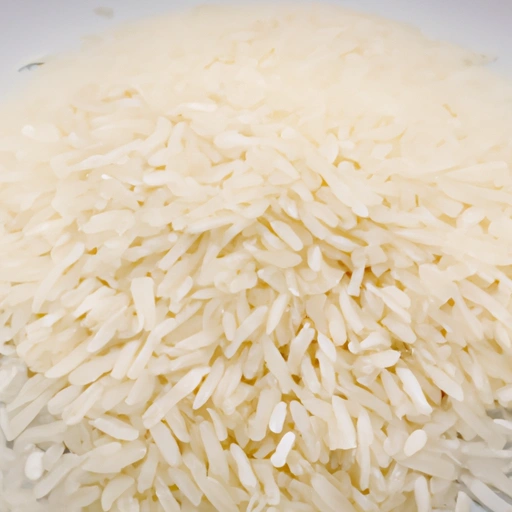Jasmine Rice
Description

Jasmine rice, also known as Thai fragrant rice, is a long-grain variety of rice that is known for its unique aroma, slightly sticky texture when cooked, and a subtle sweet flavor. It is a staple in Thai cuisine and is gaining popularity around the world for its versatility and delightful sensory attributes.
Common uses
Jasmine rice is primarily used as a base for various dishes, served alongside curries, stir-fries, and grilled meats. It is also an essential component in traditional Thai recipes such as mango with sticky rice, and it's often used in rice salads and pilafs.
Nutritional value
Calories
One cup (about 140 grams or 5 ounces) of cooked jasmine rice contains approximately 205 calories.
Protein
Jasmine rice provides about 4 grams of protein per cooked cup.
Fat
It contains a minimal fat content, typically less than 1 gram per cup.
Carbohydrates
Carbohydrates are abundant in jasmine rice, with about 45 grams per cup of cooked rice.
Vitamins
It contains small amounts of B-vitamins, particularly niacin and thiamine.
Minerals
Jasmine rice also offers minerals such as iron and a modest amount of potassium.
Health benefits
As a source of carbohydrates, jasmine rice provides energy for daily activities. The B-vitamins present in the rice help with metabolism and energy production. The fiber content, although not as high as brown rice, can aid in digestion when consumed as part of a balanced diet.
Potential risks
Excessive consumption of jasmine rice, like any other white rice, can lead to spikes in blood sugar levels due to its high glycemic index. Additionally, those with celiac disease or gluten intolerance should consume jasmine rice with caution, as it is sometimes processed in facilities that handle gluten-containing grains.
Common recipes
Jasmine rice is widely used in recipes such as Thai green curry, coconut rice, fried rice, and rice pudding.
Cooking methods
It can be cooked using various methods, including steaming, boiling, and using a rice cooker. Jasmine rice typically requires less water than other types of white rice, with a recommended ratio of 1 part rice to 1.5 parts water.
Pairing with other ingredients
This rice pairs well with aromatic spices like cardamom, cloves, and cinnamon. It also complements the flavors of coconut milk, lemongrass, and fresh herbs like cilantro and basil.
Summary
Jasmine rice is an aromatic grain that enriches the flavor profile of any dish it accompanies. Its fragrant nature and soft, slightly sticky texture make it a favorite in both Asian and international cuisines. When incorporated into a balanced diet, it can contribute to one's overall nutritional intake while satisfying taste buds with its delightful aroma and taste.